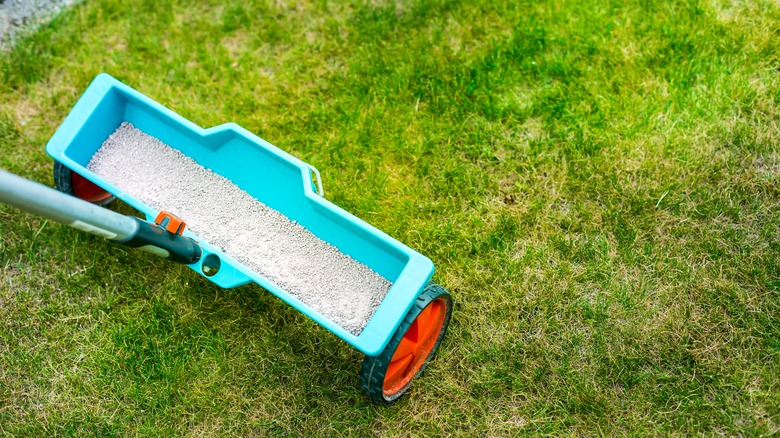Is Hybrid Fertilization The Answer To A Healthy Lawn?
Organic and synthetic fertilizers differ in their composition and nutrient content. Fertilizers derived from natural sources tend to have lower nutrient concentrations but provide a more balanced mix, while those manufactured through chemical processes have higher concentrations and allow for more targeted nutrient applications. The conversation about organic and synthetic fertilizers is usually centered around which to use based on these differences, alongside other factors like environmental concerns and budget considerations. However, you should combine them in a hybrid approach so your soil can enjoy all the health benefits.
Plants need a total of 17 essential nutrients to thrive, and these can be generally categorized into primary macronutrients, secondary macronutrients, and micronutrients, per The University of Minnesota. Synthetic fertilizers provide nitrogen (N), phosphorus (P), and potassium (K) which are the primary macronutrients, but the others are still necessary. When used together, both kinds of fertilizers will provide more benefits than either can by itself.
The benefits of hybrid fertilization
Hybrid fertilization makes a lawn healthier because it helps achieve a balanced nutrient profile for your plants. Synthetic fertilizer will cover the main nutrients, as mentioned above, but organic fertilizers are better for improving soil structure and microbial activity. Combining both means gaining their unique benefits and being able to use their strengths to meet specific nutrient needs. For example, a synthetic fertilizer with a high nitrogen content can help if you want to grow leaves and stems, per Agribusiness How It Works on YouTube, while an organic fertilizer can provide carbon which feeds soil microorganisms and increases the levels of organic matter.
Using hybrid fertilization will also allow the soil to benefit from the different ways both kinds of fertilizers work. Synthetic fertilizers typically release nutrients quickly while organic fertilizers release nutrients more slowly. Getting that immediate boost together with consistent support over time will give the best of both worlds to your lawn. The way to do this is to use fast-release fertilizer when the grass is just starting out and needs growth, then slow-release fertilizer when it's more established, to provide steady nourishment.
Products and tips
You can use both types concurrently or use dedicated hybrid fertilizers that already have the two varieties mixed in. Some of the best types of organic fertilizers are single-ingredient products, like bone meal fertilizer, that can supply fewer ingredients and address specific needs. The DTE™ Bone Meal 3-15-0 by Down To Earth costs $19 for a 5-pound box and will provide phosphorous and calcium. You can also make your own by creating homemade combinations of organic matter. For example, eggshells, vinegar, and Epsom salts can be mixed to remedy soil deficient in calcium and magnesium. Supplement the NPK fertilizers with organic substances like these for a healthy lawn.
PGF Complete™ 16-4-8 by The Andersons Home and Garden is a hybrid fertilizer that has both slow and fast release, containing micronutrients like iron as well as NPK. An 18-pound bag costs $50. As you take the hybrid approach, be careful not to give the soil too much of any nutrient because this can hurt it. Always strive for balance in the fertilization process by sticking to the general recommendation of fertilizing your lawn twice a year and making sure you don't apply too much.


